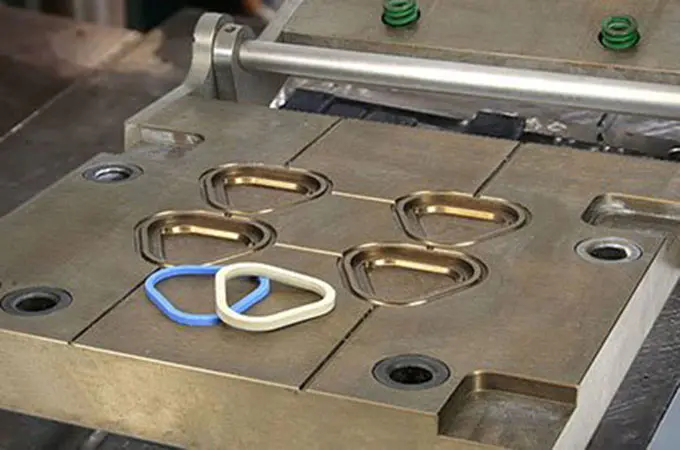
Home » NBR

NBR
Material Type
Rubber
Material Full Name
Nitrile Butadiene Rubber
Process Compatibility
Compression Molding, Injection Molding
List of Elastomer & Rubber Material
List of Plastic Material
List of Metal Material
NBR Description
Price
$$$$$
Strength
Excellent resistance to oils, fuels, and chemicals, high tensile strength and abrasion resistance.
Weakness
Limited resistance to ozone, weathering, and sunlight, poor performance at low temperatures.
Common Application
Automotive seals, gaskets, O-rings, and hoses, gloves, footwear, and seals for plumbing.
NBR Properties
NBR stands for Nitrile Butadiene Rubber is a synthetic rubber polymer known for its excellent oil and fuel resistance, along with a wide range of other desirable properties. NBR is derived from the copolymerization of acrylonitrile and butadiene monomers. It is often referred to as nitrile rubber.
Properties at a Glance
*Pease note: The following material properties are for reference only. Actual values may vary depending on the selected material brand.
| Property | Metric | English |
|---|---|---|
| Density | 0.8-1.2 g/cm³ | 50-75 lb/ft³ |
| Shore Hardness A | 20-95 | 20-95 |
| Tensile Strength | 1.38-24.13 MPA | 200-3500PSI |
| Elongation at Break | 350-650% | 350-650% |
| Min Temp. | -56~-18°C | -70~ -20º F |
| Max Temp. | 80°C~105°C | 180º~ 220º F |
Chemical Properties
- Resistance to oils and fuels
- Good resistance to chemicals such as acids and bases.
- Limited resistance to aromatic hydrocarbons.
How to Improve NBR Properties
Additives play a crucial role in enhancing NBR's properties, which can provide additional functionalities and improve specific characteristics. Here's how additives can be used:
- Plasticizers: These additives increase the flexibility and softness of NBR, making it easier to process. Plasticizers also help lower the polymer's glass transition temperature.
- Antioxidants: Added to NBR formulations to prevent premature aging and degradation, thereby extending the service life of NBR products.
- Fillers: Fillers such as carbon black, silica, and calcium carbonate are commonly used to reinforce NBR. These fillers enhance tensile strength, tear resistance, and abrasion resistance.
- Processing Aids: These additives make nitrile material easier to process and have higher productivity during manufacturing.
Get Custom NBR Parts with Zhongde
Can NBR be used in food contact applications?
NBR is not typically recommended for direct food contact applications due to potential concerns about the leaching of chemicals and additives. However, specialized grades of NBR that meet specific regulatory requirements may be suitable for certain indirect food contact applications, such as gaskets and seals in food processing equipment.
Is NBR suitable for harsh environmental conditions?
Nitrile rubber is highly durable and can withstand harsh environmental conditions, including exposure to chemicals and oils. Its ability to resist wear and tear makes it suitable for use in applications that require long-term performance.
Are there any health or safety concerns associated with NBR use?
While NBR is considered relatively safe for most industrial and commercial applications, there may be concerns related to potential exposure to hazardous chemicals during NBR manufacturing processes or when handling NBR-containing products.
Can NBR be recycled or disposed of sustainably?
NBR is generally not biodegradable and can be challenging to recycle due to its complex chemical structure and the presence of additives. However, some efforts are being made to develop recycling processes for NBR waste, such as mechanical and chemical recycling methods.




